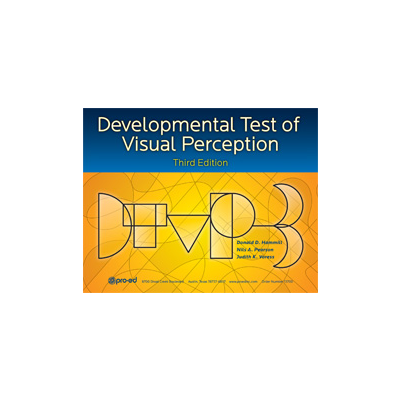Donald D. Hammill, Nils A. Pearson, Judith K. Voress
Overview:Assessment of visual perception and visual-motor integration
Age Range:4-0 through 12-11
Administration:Individual
Completion Time:30 minutes
Publication Date:2013
The DTVP-3 provides the most recent revision of the Developmental Test of Visual Perception authored by Marianne Frostig. It is a highly reliable measure offering extended norms to age 12:11. Unlike other tests of visual perception and visual-motor integration, the DTVP-3 provides scores that are reliable at the .80 level or above for all subtests and .90 or above for the composites for all age groups.
The DTVP-3 comprises five subtests: Eye-Hand Coordination, Copying, Figure-Ground, Visual Closure, and Form Constancy.
New Features of the DTVP-3
- New normative data were collected in 2010 and 2011
- Norms were extended upward to age 12 years, 11 months
- The composite scores have no floor or ceiling effects
- Numerous eligibility and validity studies, including studies of the test’s sensitivity, specificity, and ROC/AUC, have been provided
- The study of item bias has been expanded
- The overall look of the test was updated
DTVP-3 Subtests
The DTVP-3 has five subtests.
- Eye-Hand Coordination. Children are required to draw precise straight or curved lines in accordance with visual boundaries.
- Copying. Children are shown a simple figure and asked to draw it on a piece of paper. The figure serves as a model for the drawing. Subsequent figures are increasingly complex.
- Figure-Ground. Children are shown stimulus figures and asked to find as many of the figures as they can on a page where the figures are hidden in a complex, confusing background.
- Visual Closure. Children are shown a stimulus figure and asked to select the exact figure from a series of figures that have been incompletely drawn. In order to complete the match, children have to mentally supply the missing parts of the figures in the series.
- Form Constancy. Children are shown a stimulus figure and asked to find it in a series of figures. The targeted figure will have a different size, position, and/or shade, and it may be hidden in a distracting background.
DTVP-3 Composites
The results of the five DTVP-3 subtests are combined to form three composites: Motor-reduced Visual Perception, Visual-Motor Integration, and General Visual Perception (combination of motor-reduced and motor-enhanced subtests). Subtests were assigned to a particular composite on the basis of the amount of motor ability required by their formats.





